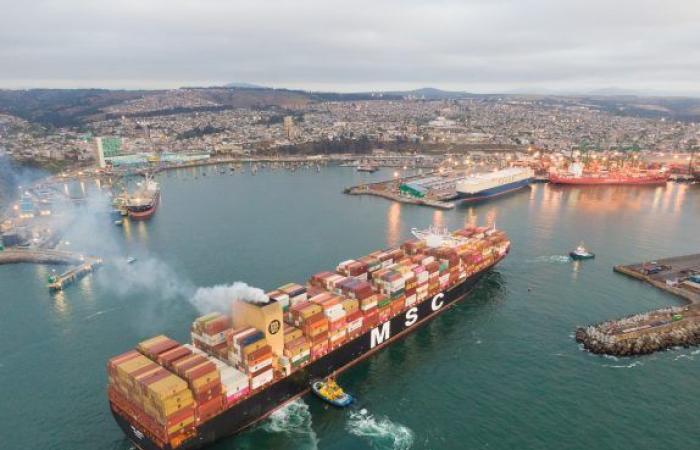By Andrés Orrego Siebert
@PortalPortuario
Since the end of April, maritime freight rates have entered an upward trend and the perspective, at least for Chile, is that reality will not vary in the opposite direction. For July, in fact, it is estimated that there will be a new increase, according to what shipping companies have already begun to inform their users.
Luis Contreras, CEO of ComexPoint, commented to Port Portal that “a notice has been received from different shipping companies informing them that, starting in July, maritime freight rates will rise significantly, affecting companies that depend on international trade. This increase in costs worries management, which is already facing high shipping costs after last year’s declines. Economists warn about the impact on Chilean consumers, in a context of inflationary crisis.”
The specialist explained that “the main causes of the increase are the crisis in the Red Sea and the Suez Canalthe new carbon emissions regulations in the European Union and the climatic situation in the Panama Canal. These conditions have raised operating costs and insurance rates. According to the Global Container Freight Index, the cost of maritime cargo transportation has increased by 147.6% in one year, reaching USD 3,500 per 40-foot container.”
Contreras indicated, on the other hand, that – on average – moving an import container from China to Chile went from $1,550 on February 29 to $5,800 currently in the case of 20-foot units, while those of 40 HC or HQ went from 1,700 to 6,600.
The highest projected cost for July, according to Contreras, will double that amount. “It will go up in the coming weeks. It is expected that the 40 HQ containers will reach between USD 9,500 to USD 10,000, per container, it is happening again that China and the United States are retaining containers in their countries, mainly for this reason, the detail of the Panama Canal is added and the multiple transfers.”
For exports from Chile to China, the reality is different, since they have remained stable at USD 365 per container of 40 HC and 277 for a unit of 20, but without including the concepts of gate out or customs. However, the figure to import the products into China is high, being 2 thousand dollars for the 40-foot one and 1,500 dollars for the 20-foot one.
Another element that would be increasing transportation prices for Chilean importers and exporters, according to Carrasco, is the lower availability of direct routes to Asia, which increase during the fruit season.
“The route being used is through the Mediterranean, passing through the Panama Canal. The transit time is 85 to 90 days, depending on the shipping company, due to delays on the route, a transfer is being made at the Port of Algeciras, in Spain,” he described.
The increase in transportation prices, to which internal logistics is added, already has effects on retailers and, consequently, on final consumers.
“Whoever imports from China today observes that the prices at which imported goods arrive are going to be higher than those that existed a few months ago. And what is going to happen? He is going to try to pass on all this increase to the final consumer, generating pressure for the consumer and a pressure that also has a multiplier effect because it translates into an increase in general prices. This positively stimulates inflation,” he said. Héctor Osorio, PKF economist.
In turn, in the case of exporters, the increasing increases will reduce the margins of those businesses, fundamentally, linked to raw materials.
“The increase in the value of transportation, as is the case observed and in this situation in material terms, that is, significant, will undoubtedly generate several effects. In the short term, the margins with which exporters operate decrease. Exporters will at some point pass this on to the final consumer’s price, however, this transfer is not automatic. What we are going to observe first is a decrease simply in the producers’ margin. If we also think that what we sell to China generally corresponds to commodities, it is unlikely that we will observe situations of interest at the local price level,” he stated.
“Notwithstanding the above, we have to consider that just as shipments to China are becoming more expensive, shipments from China are also becoming more expensive and that is a factor that without a doubt has a much more direct and probably much faster effect on the final consumers,” Osorio remarked.






